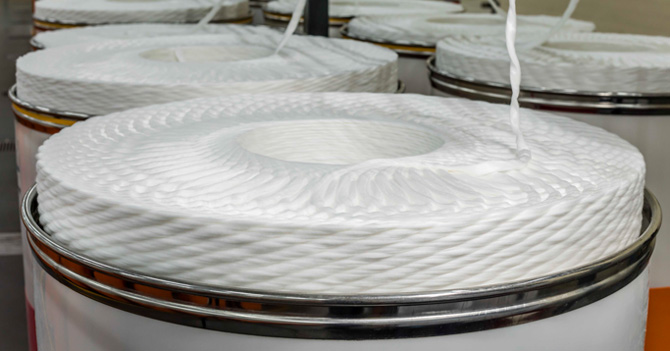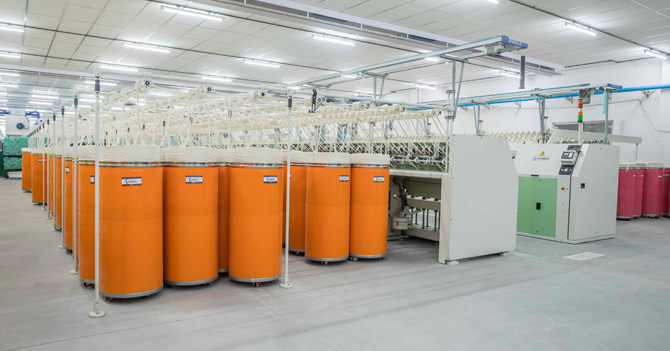Over the years, Jumac has established its presence in five…

Effects of Sliver Handling On Quality of Sliver and Yarn
Material handling plays a pivotal role in the spinning industry, influencing yarn quality significantly across various stages from processing to storage. Over here, we have delved into the critical effects of sliver handling on sliver and yarn, highlighting key factors that impact the final product.
Effect of Spring Load and Storage Time on U%
One of the crucial aspects affecting yarn quality is the spring load of sliver cans and the duration of storage. Yarn unevenness (U%) tends to increase when sliver cans have lower spring loads and are stored for longer periods. This phenomenon occurs due to the heightened probability of fiber leakage between adjacent sliver coils.
As sliver remains stored, the structural integrity weakens, leading to a greater propensity for fibers to escape from their coils during subsequent processing stages like drafting over speed frame and ring frame. Consequently, this results in a higher U% in the final yarn, impacting its uniformity and overall quality.

Effect of Spring Load and Coil Position on Strength CV%
The strength coefficient of variation (CV%) in yarn is significantly influenced by the spring load of sliver cans and the position of the sliver coils within them. Older sliver cans with reduced spring stiffness often exhibit higher CV% in strength. This is primarily due to the deformation and stretching of sliver fibers within the can.
During storage and handling, especially with reduced spring stiffness, the bottom sliver coils experience compression and elongation, creating inconsistencies in the yarn’s strength. These variations are exacerbated during subsequent processing stages, contributing to a higher CV% in the strength of the final yarn product.
Effect of Storage Time and Coil Position on Thin Places
Extended storage times of sliver cans also impact yarn quality, particularly in terms of introducing thin places. Thin places in yarn occur when there are irregularities in sliver structure, often caused by sliver splitting and stretching during processing stages such as drafting at the speed frame.
The bottom sliver coils, having been subjected to prolonged storage, are more prone to sticking together due to reduced inter-fiber friction. This increased contact area leads to greater sliver deformation and, consequently, a higher incidence of thin places in the final yarn.
Effect of Coil Position and Storage Time on U%
Similar to strength CV%, yarn unevenness (U%) is affected by the position of sliver coils within the can and the duration of storage. At higher storage times, particularly with bottom sliver coils, compression forces from the weight of upper layers and the spring mechanism can flatten the sliver. This flattening process, coupled with stretching during subsequent processing, contributes to an elevated U% in the yarn.
The uneven distribution of sliver thickness and structure directly correlates with the final yarn’s unevenness, impacting its visual appeal and performance characteristics.
The Final Word
Meticulous handling of sliver throughout the manufacturing process is crucial for ensuring optimal yarn quality. From maintaining appropriate spring loads in sliver cans to minimizing storage times, every step influences the final product’s characteristics. Manufacturers must prioritize efficient material handling practices to mitigate the detrimental effects discussed, thereby enhancing overall yarn consistency and strength.
By understanding and addressing these factors, spinning mills can achieve higher standards of yarn quality and meet the demands of discerning consumers and industrial applications alike.

Passionate about transforming the industrial sector of textile and spinning industry with innovative solutions. Director at Jumac Manufacturing, leading spinning cans and accessories manufacturer and exporter from Kolkata, India.









